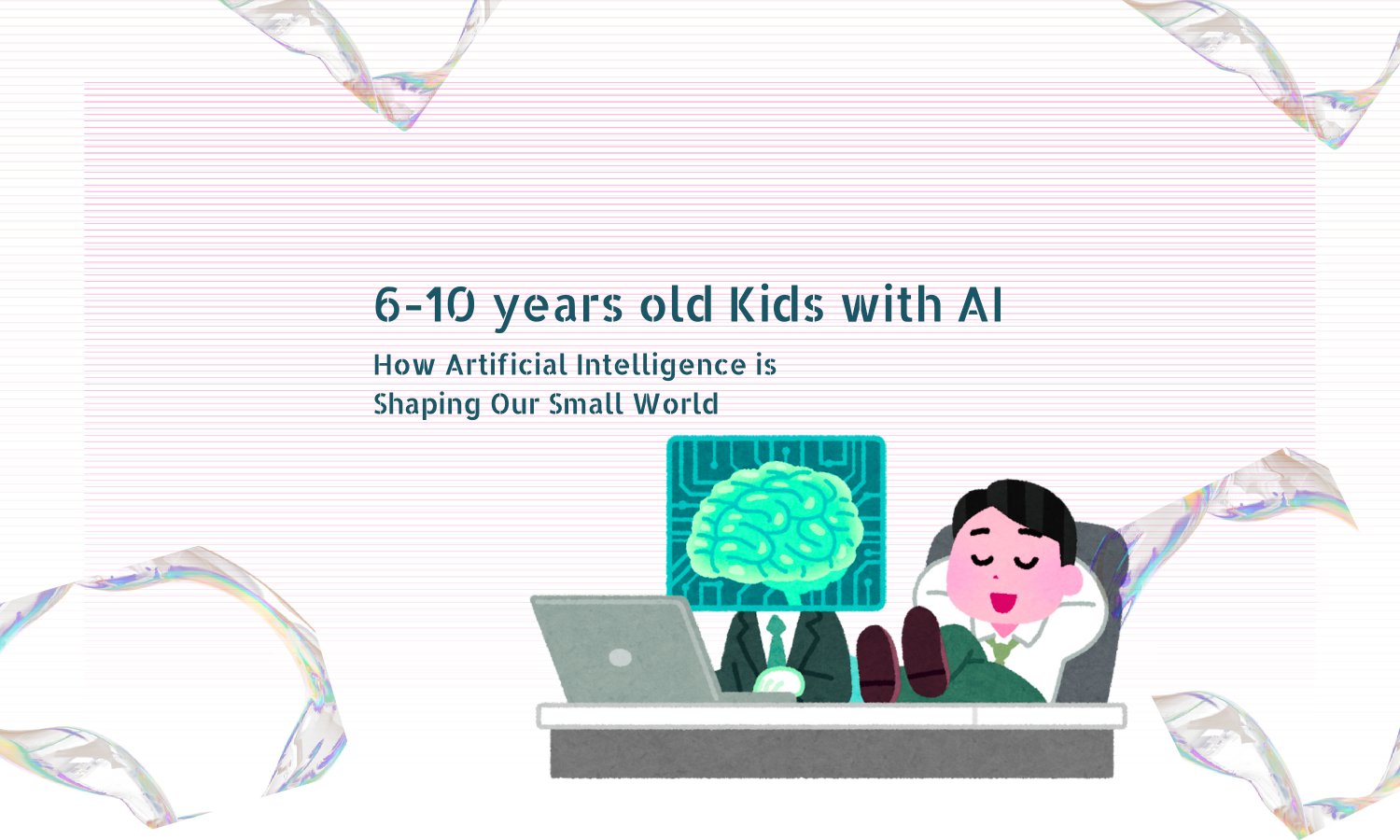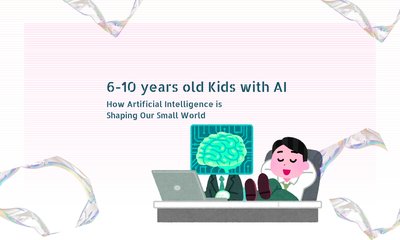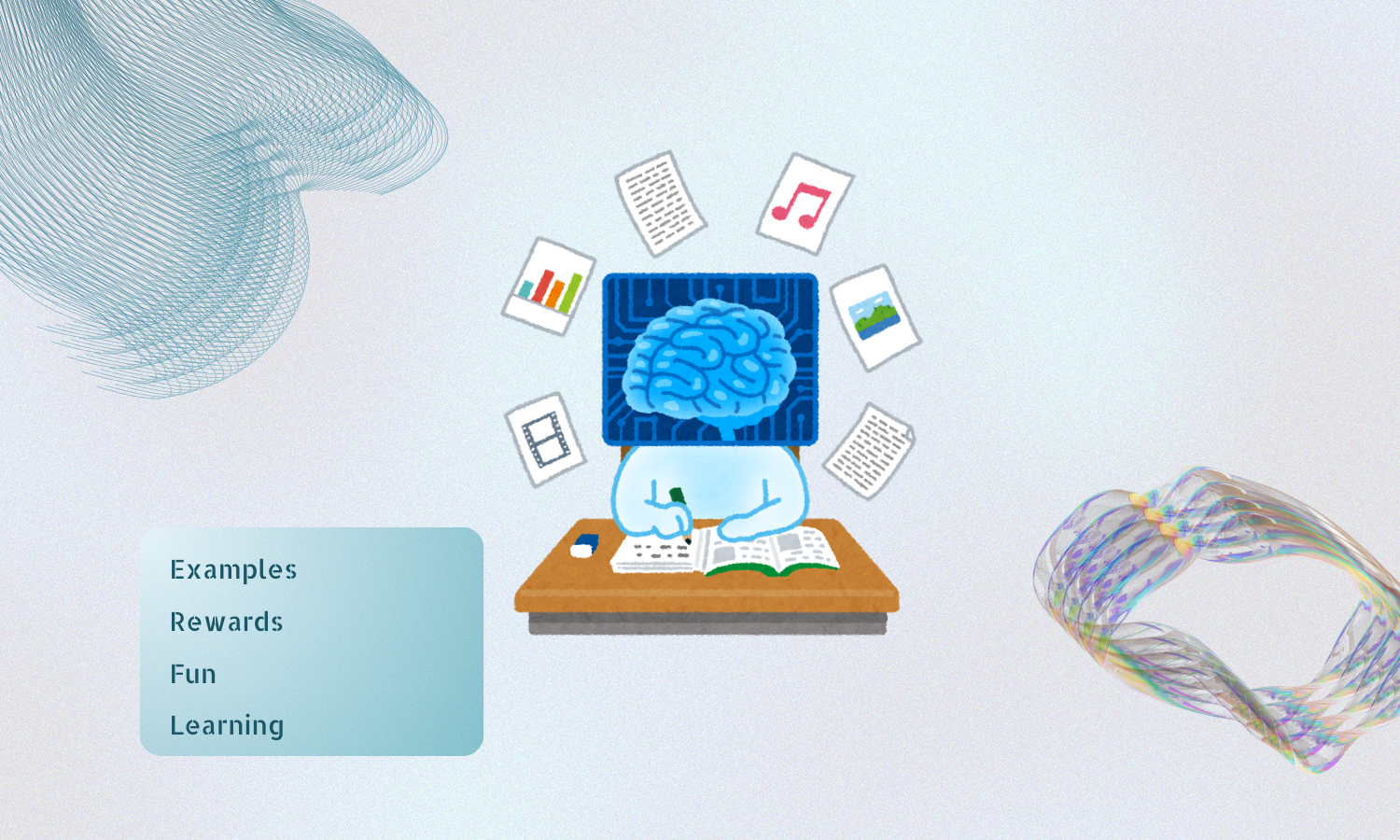How to Teach Kids (6-10) to Use AI: Fun, Engaging, and Ethical Learning
By hientd, at: April 3, 2025, 11:35 p.m.
Estimated Reading Time: __READING_TIME__ minutes


Artificial Intelligence (AI) is becoming an essential part of our daily lives, and it's important that children learn how to use it responsibly from a young age. AI is not just for adults, kids can benefit from it too! However, instead of using AI to copy answers or cheat, children should learn how AI can be their thinking partner, creative assistant, and learning companion.
In this post, we’ll explore why kids should learn AI, the advantages and disadvantages, and fun activities to teach them how to use AI in a meaningful way.
Why Should Kids Learn AI?
Introducing AI to children at an early age helps them:
- Understand Technology: AI is shaping the future, and kids should be aware of how it works.
- Think Critically: AI is smart, but it’s not always right! Kids should learn how to evaluate AI responses.
- Boost Creativity: AI can help kids generate ideas, tell stories, and solve problems.
- Develop Communication Skills: Talking with AI chatbots can improve language skills and logical reasoning.
- Build Healthy AI Habits: Instead of relying on AI for easy answers, kids should learn to collaborate with AI responsibly.
The Pros & Cons of AI for Kids
Advantages
- Encourages Curiosity: Kids can ask AI anything and explore topics they’re interested in.
- Personalized Learning: AI adapts to a child's pace, making learning more effective.
- Boosts Problem-Solving Skills: AI-powered games and challenges help kids develop logical thinking.
- Assists in Creativity: AI can help generate drawings, music, and stories.
Disadvantages
- Over-Reliance on AI: Kids might start depending on AI instead of thinking for themselves.
- Lack of Social Interaction: Too much AI use may reduce real-world communication with friends and family.
- Misinterpretation of AI: Kids might think AI is always correct or mistake it for a human.
Fun & Engaging Exercises to Teach Kids AI
Instead of making AI learning feel like a classroom lesson, we should make it fun and interactive. Below are eight hands-on activities that will excite children while teaching them how to use AI responsibly.
1. AI Storytelling Adventure
Goal: Show kids that AI can assist with storytelling, but they should use their imagination too.
How to do it:
- Ask an AI chatbot (e.g., ChatGPT) to generate the first part of a story. Example:
"Once upon a time, a tiny robot got lost in the forest…"
- Kids continue the story using their own creativity.
- They can ask AI for help with plot ideas but must modify them themselves.
- At the end, kids illustrate their story and share it with friends.
Updated: recently, I played around with Gemini Storybook and here is a quick draft version - we can turn on the audio voice, we can flip the book page just like reading a real book. Awesome hah.
Fun Twist: Turn this into a "Best AI + Kid Story of the Week" competition.
2. AI vs. Human: Who’s Smarter?
Goal: Teach kids that AI is smart but not always right.
How to do it:
- Kids ask AI tricky questions to test its knowledge.
- If AI gets it wrong, they discuss why AI made the mistake.
- Example tricky questions:
- "Can a fish climb a tree?" (To test AI’s logic)
- "What happens if you mix blue and yellow?" (To check if AI understands color mixing)
- "What is 10 + 5 - 5 + 2?" (Simple math test)
- "Can a fish climb a tree?" (To test AI’s logic)
Fun Challenge: Kids get points for the most creative question that confuses AI.
3. AI Drawing Challenge
Goal: Show how AI can be creative, but humans bring unique ideas.
How to do it:
- Kids describe a fun character (e.g., "A cat with dragon wings and rainbow fur").
- Use an AI drawing tool like DALL·E to generate an image.
- Kids then draw their own version and compare.
- They discuss: Which version is better? How can we improve AI’s drawing?
Fun Twist: Hold an "AI vs. Kid Art Battle" and let kids vote on the most creative drawing.
4. AI as a Debate Partner
Goal: Teach kids to think critically and challenge AI.
How to do it:
- Pick a topic like "Dogs are better than cats."
- Ask AI for one side of the argument.
- Kids must argue the opposite side using their own reasoning.
- At the end, discuss:
- Did AI’s response make sense?
- Did AI understand emotions vs. facts?
- Did AI’s response make sense?
Fun Twist: Turn it into a mini debate competition.

5. AI Detective Scavenger Hunt
Goal: Teach kids how AI exists in real life.
How to do it:
- Give kids a scavenger hunt:
- Find AI in daily life (YouTube recommendations, smart home devices, video games).
- Ask parents how AI helps at home.
- Spot AI in school apps.
- Find AI in daily life (YouTube recommendations, smart home devices, video games).
- Kids present their findings in class.
Fun Twist: Create a poster called "AI in My Daily Life."
6. AI as a Learning Assistant
Goal: Show kids that AI is a learning tool, not a cheating tool.
How to do it:
- Kids ask AI to explain a concept (e.g., "What is multiplication?").
- AI provides an explanation, and kids must rephrase it in their own words.
- They then teach a classmate what they learned.
Fun Twist: Reward the best "Mini-Teacher" who explains it best.
7. AI Karaoke & Poetry Time
Goal: Show that AI can generate ideas, but humans add creativity.
How to do it:
- Ask AI to create a poem or song.
- Kids modify it to make it funnier or more meaningful.
- They perform it in class.
Fun Twist: Hold an "AI Karaoke Time" session.
8. AI Chatbot Friend
Goal: Teach kids that AI can be fun to chat with, but it’s not human.
How to do it:
- Kids ask AI fun questions like:
- "What’s your favorite ice cream?"
- "Tell me a joke!"
- "What’s your favorite ice cream?"
- They then role-play as an AI chatbot and answer like a robot.
Fun Twist: Let them name their AI Friend (e.g., "ChatBot Rex").
Final Thoughts: AI is for Learning, Not for Cheating
AI should help kids think, create, and explore, not just give answers. By making AI fun and interactive, we teach children how to use AI wisely and responsibly.
What are your thoughts? Would you like to see AI programs introduced in schools?





